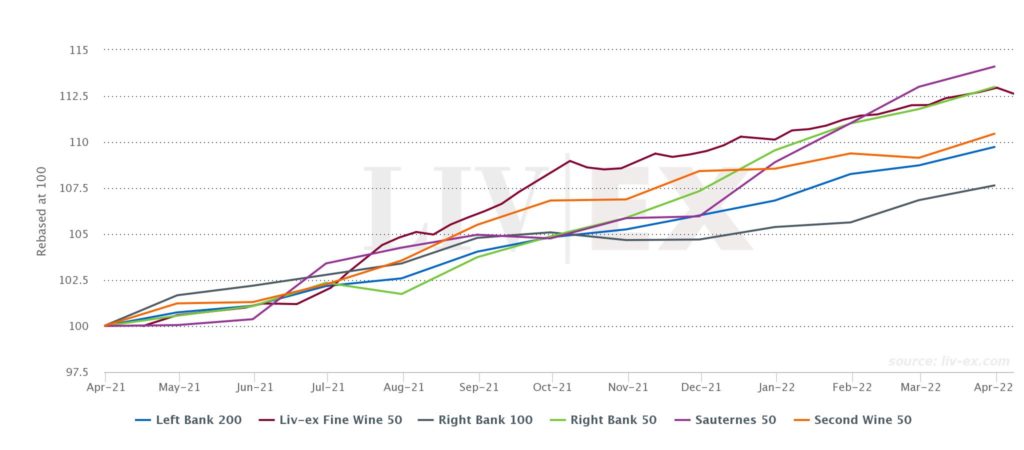The Bordeaux 500 index has risen 11.5% over the past year. However, compared to the Liv-ex 1000’s other sub-indices, it is the weakest performing region. The Burgundy 150 (43.8%) and Champagne 50 (51.2%) are the clear front-runners, but the Rhone 100 (15.7%) and Italy 100 (17.8%) are also ahead too.
Looking at the sub-indices within the Bordeaux 500 reveals a divided picture. The star of the show is the Sauternes 50, which might come as a surprise to some. The sub-index has historically lagged behind the other Bordeaux 500 sub-indices, but it has found success over the past year thanks to Yquem. Among the Sauternes 50 components, Suduiraut 2017 has seen the biggest price rise, up 30.6%.
With price rises as impressive as these, one might wonder what is holding Bordeaux back? Although all the sub-indices are up over this period, the Right Bank 50 and Right Bank 100 have seen the smallest increases – up 7.6% and 9.7% respectively.
Interestingly, the Second Wines 50 has performed only slightly better – up 10.5%. Historically, this sub-index has been a lead indicator of growing demand from Asia. When looking at a five-year period, the Second Wine 50 is up the most (40.4%).
Our Indices Explorer tool allows you to dig into the data behind our indices so that you can find out which wines are driving market trends. With 3,882 LIVE opportunities at the time of writing, whether you’re looking to buy or sell, Bordeaux has plenty of options.
Bordeaux 500 sub-indices over one year
*Made using Liv-ex’s Charting Tool.
For all Bordeaux LIVE opportunities, click here.
Liv-ex analysis is drawn from the world’s most comprehensive database of fine wine prices. The data reflects the real time activity of Liv-ex’s 560+ merchant members from across the globe. Together they represent the largest pool of liquidity in the world – currently £100m of bids and offers across 16,000 wines. Independent data, direct from the market.








